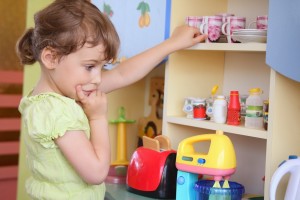
“A place for everything, and everything in its place.” What a wonderful dream.
When I was six years old, my toys would fit in one drawer of my dresser. Jacks and balls, jump rope, coloring books, crayons, checkers and a deck of cards. A shelf in the closet held all the toys for five children; board games, puzzles, dolls, wooden blocks, Lincoln logs, tinker toys and erector sets. How things have changed.
With my children, I was constantly challenged to find room for all their “things.” Being the oldest granddaughters on both sides of the family with eight aunts and uncles, every holiday presented an overload of new possessions. Shelves with boxes and baskets helped keep their items organized. Also a rule about having only one activity out at a time helped keep the house tidy. Of course, all organization and rules could disappear when company arrived, with chaos and clutter ensuing.
When confronting a mess, children get overwhelmed with the effort it takes to clean and reorganize, just like we do.
Where do we start? If our home is organized, and things have a place, this order will help our children learn to return their toys, books and clothes to order.
From birth to about age four-and-a-half, children are in a sensitive period for order. They are trying to create order out of our chaotic world. We can help them by keeping our living environment organized and predictable.
Think of how frustrated we get when the aisles in the grocery store are reorganized and we can’t find our favorite products.
Our children experience that frustration and more when trying to navigate their environments.
To keep a predictable environment, think, “Less is more.”
Choose toys and clothes carefully. Pack or give away seasonal, outgrown or unused items. Rotate toys on the shelves.
For clothes organization, lower closet racks to child height. Use small hangers and show your child how to hang up clothes. Use small baskets at child level for socks, underwear and foldable items.
Another aspect of organization is time management.
Try to make the order of the day predictable but not boring. Having breakfast, lunch, dinner and snack times on a predictable schedule will help your child feel secure and establish order in their day.
Model how to keep organized by using and displaying lists, calendars, day planners, journals and sticky notes. My family loves to tease me about my multi-colored sticky notes, but I did notice some on my daughters’ refrigerators. I guess the organization skills stuck.
Mention in casual conversation how long it takes to do different tasks; an hour to go to the store, five minutes to the bank, thirty minutes to cook dinner, a year to build a house. Also play games like “I think we can pick up the playroom by the time I count to a hundred.”
The secret to helping your child be organized, I’m sure you’ve discovered, is to be organized yourself.
If you have trouble being organized, look into classes or ask an organized friend to help you with some tips. Remember, everything you do to help yourself be better organized will help your children feel ordered and more in control of their lives.
